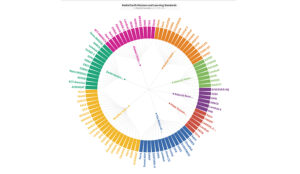A new website featuring Landsat images of 77 international cities has been published by the Socioeconomic Data and Applications Center (SEDAC). By analyzing urban reflectance (both visible and infrared) and surface temperatures, SEDAC has established criteria to help distinguish urban land cover from other land cover types. These spatial characterizations of urban land cover extent can be feed into climate, hydrology, and ecology models helping to make the models more accurate.
 As described on the Urban Landsat web page, Landsat data provide “objective physically-based metrics for comparative analyses of urban dynamics that cannot generally be obtained from administrative definitions of urban extent.”
As described on the Urban Landsat web page, Landsat data provide “objective physically-based metrics for comparative analyses of urban dynamics that cannot generally be obtained from administrative definitions of urban extent.”
SEDAC is a NASA Distributed Active Archive Center (DAAC) that focuses on data about human interactions with the environment. The center is housed at Columbia University’s Lamont-Doherty Earth Observatory in New York.
+ Visit Urban Landsat: Cities from Space (external link)

Undamming the Klamath
Between October 2023 and October 2024, the four dams of the Klamath Hydroelectric Project were taken down, opening more than 400 miles of salmon habitat.





